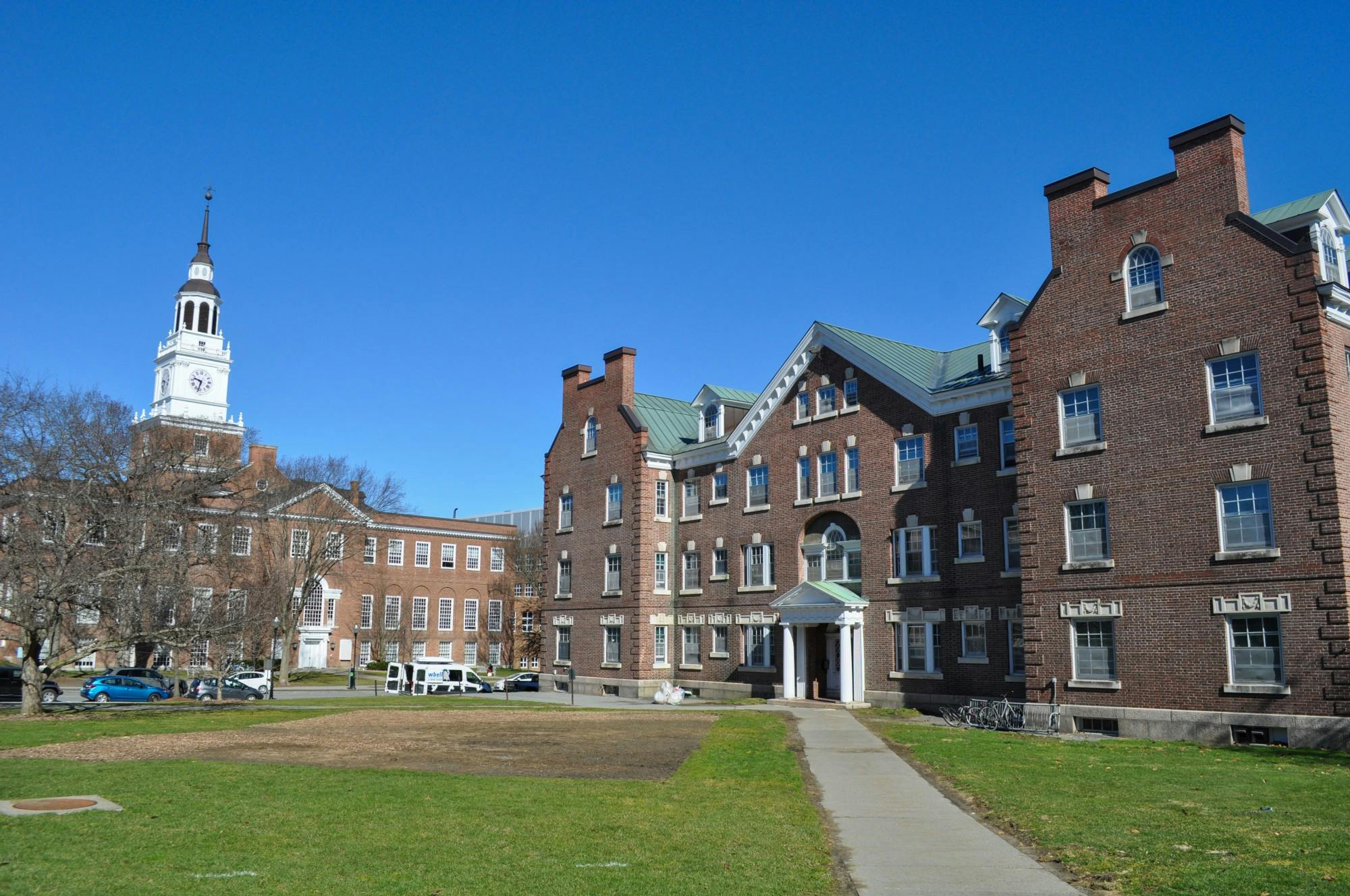This spring term, College occupancy has been slightly higher, compared to previous terms, according to undergraduate housing director Rachael Class-Giguere.
Due to the high number of students this term, on-campus housing can feel limited, North Park undergraduate advisor Tim Bonis ’26 said.
“I just know there is this feeling of very little headroom in the Office of Residential Life,” North Park undergraduate advisor Tim Bonis ’26 said. “There’s no flexibility in anything.”
Dartmouth accommodates a large share of its students: Although juniors and seniors are not guaranteed housing, approximately 80% still live on campus, in residence halls, living learning communities and Greek housing.
Dartmouth has made a conscious effort to expand on-campus housing options. In response to the housing shortage, College President Sian Leah Beilock made a $500 million commitment to add 1,000 new beds over the next decade.
As part of this pledge, the College purchased four properties on West Wheelock Street to increase housing options last summer. This purchase, alongside alumni — like Thomas and Gina Russo ’77, who donated $30 million for Russo Hall — aim to address the housing shortage and provide more on-campus housing for students.
In an email statement to The Dartmouth, a spokesperson for the Office of Residential Life wrote that it strives to accommodate student preferences based on available inventory.
“We understand that it can be frustrating when preferences cannot be met and are actively working to expand and improve undergraduate housing options for the future,” the statement said.
Dartmouth’s so-called “D-Plan” gives students considerable agency over when they’re on campus. To complete a degree, students must complete 12 residence terms, but can take three off-terms at their convenience. The requirements of the D Plan are limited: Freshmen are only required to be on during their fall, winter and spring terms. Seniors are only required to be on during their spring term.
The D-Plan was introduced in 1972 as part of former College President John Kemeny’s push towards coeducation at Dartmouth College. With the increased sizes of incoming classes, the D-Plan was introduced as a way to manage available housing without having to add more beds.
Spring has always been a popular term for students to choose to be on campus. Students are limited to seven fall and spring terms, although many students petition this requirement to take winters off instead.
Several students told The Dartmouth that the warm weather contributed to the drive to be on campus from March through June, including Lucca Radosavljevic ’28.
“One very nice thing about the spring term is the weather, of course,” Radosavljevic said. “It’s a good contrast to winter term, because you don’t have to wear heavy jackets, and you can also play some sports like tennis.”
Bonis added that the schedule of study abroad programs and internships were also important determinants of when students took their terms on.
“I know that when my friends were thinking about which terms they’d like to take off, it was always winter or fall,” Bonis said. “No one wants to take off this spring, and I do think it’s mostly weather. They work around that, and obviously it doesn’t always shake out that that is when the opportunities are available, but that’s the ideal in mind.”
Besides room draw and housing issues, high-occupancy terms have the potential to create other noticeable changes such as longer waiting times at Dartmouth Dining locations and a more crowded campus. Radosavljevic found some dining locations being slightly busier.
“It might be due to my schedule being different this term, but I’ve noticed that usually whenever I go to Novack or the Fern or [’53 Commons], very often it’s pretty crowded in there,” he said. “I mean, sometimes I have to wait longer than I had to in the winter term. It’s not a big deal because it’s just maybe five more minutes of waiting, but I do notice that it’s a little more people that I was used to seeing during winter term.”
However, according to Dartmouth Dining director Jon Plodzik, this term has not seen a new strain on dining due to high occupancy.
In a statement, Plodzik noted that high demand periods for dining services are driven “primarily by class schedule” and that this occupancy has not impacted their business or their locations.
As a UGA, Bonis did not go through the room draw process for this term. He noted that upperclassmen are “more relaxed” about housing due to their priority numbers and options for living off campus. However, the same can not be said for ’28s and ’27s. Bonis said that many freshmen and sophomores express “stress and anxiety” about room draw. These fears come from the possibility of being placed in Summit on Juniper apartments because it limits “the ability to engage with social experiences on campus”
“There’s, almost this … dagger hanging over people’s heads, especially ’28s who are going to be sophomores next year, who I think [have] the least housing security, this dagger of being sent to Summit,” he said.




